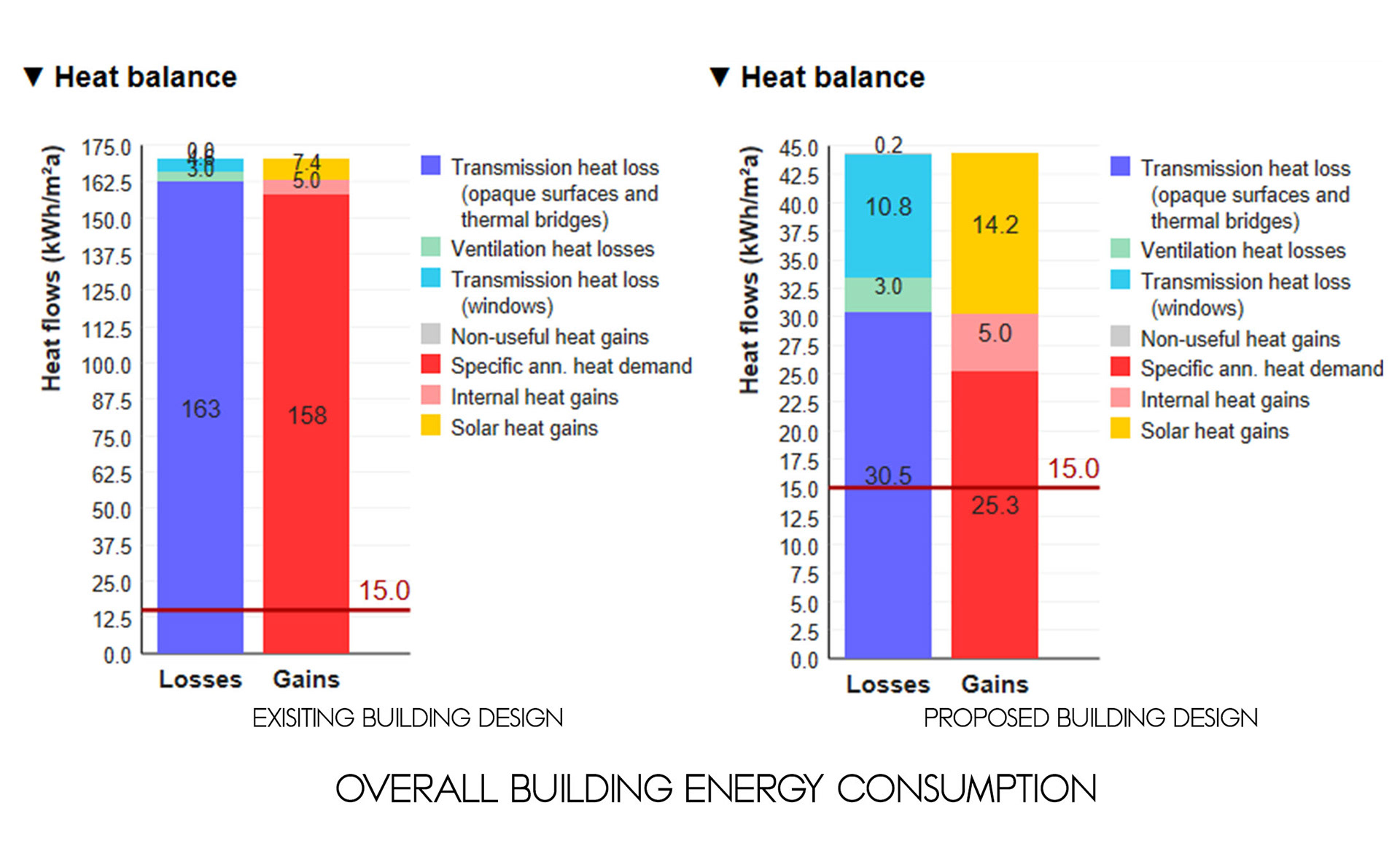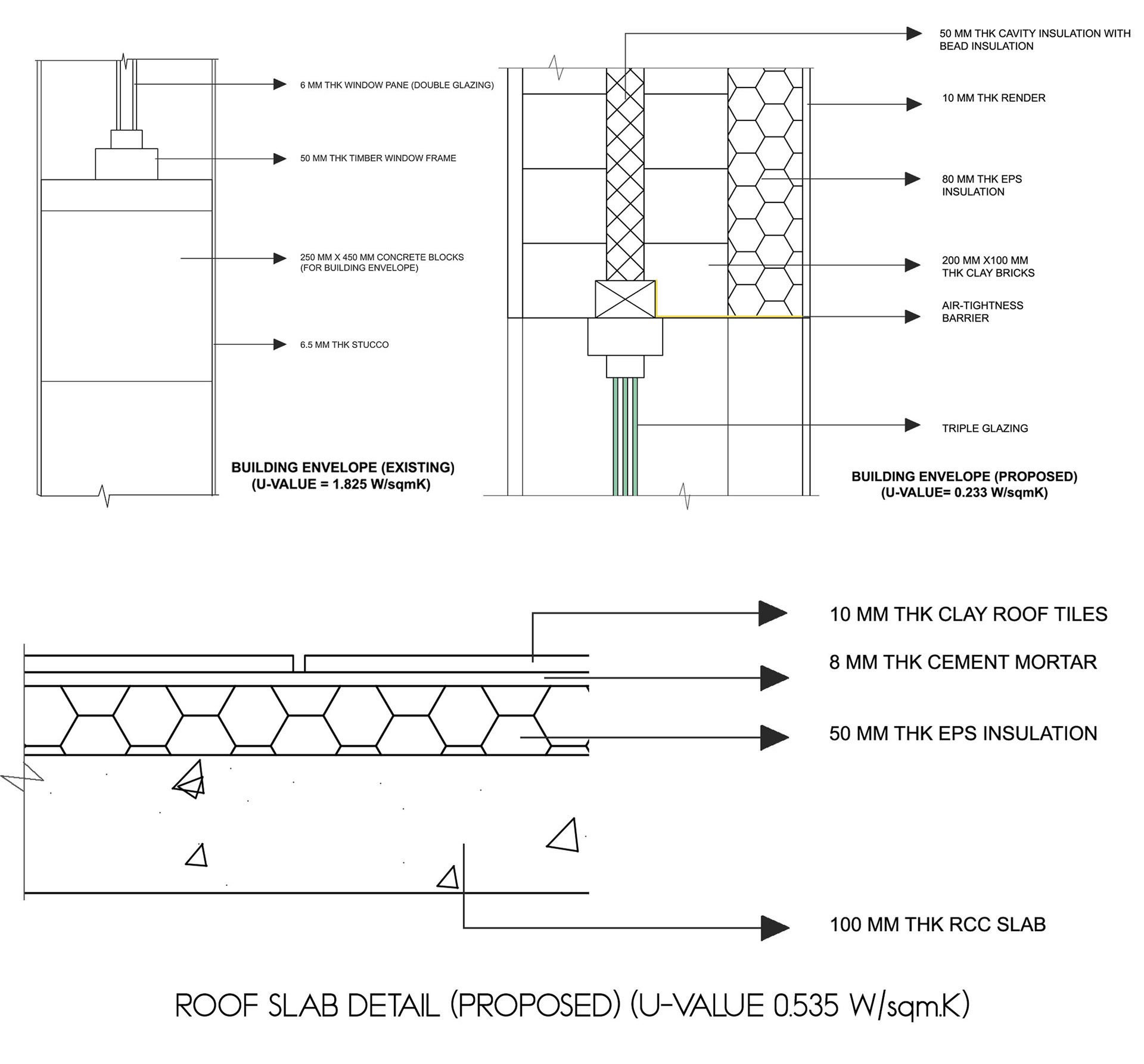The Passivhaus principles are mainly applicable for buildings in the UK and most parts of Europe; is it possible for the same principles to work in a climatic region where humidity and radiation are topics of concern? This research deals with the functioning of Passivhaus design standards for a residential building in Kerala, India, and to what limits can they work for a building located in a hot and humid climatic region.
As per this research, Passivhaus is not an appropriate standard and methodology to develop buildings for hot, humid climates, in the current scenario. However, all the documentation and evidences from this research indicate that Passivhaus has the potential to become a design standard for all climate types, especially for warm regions.
Existing Section ABCD
Proposed Section ABCD
Simulated Models for the Case Study Building (Existing and Proposed)


The addition of insulation on brick cavity-wall construction was found to successfully reduce the overall building energy consumption while creating a cooler microclimate in the interiors. All simulations and calculations were carried out in the DesignPH plugin for SketchUp and Passive House Planning Package (PHPP).